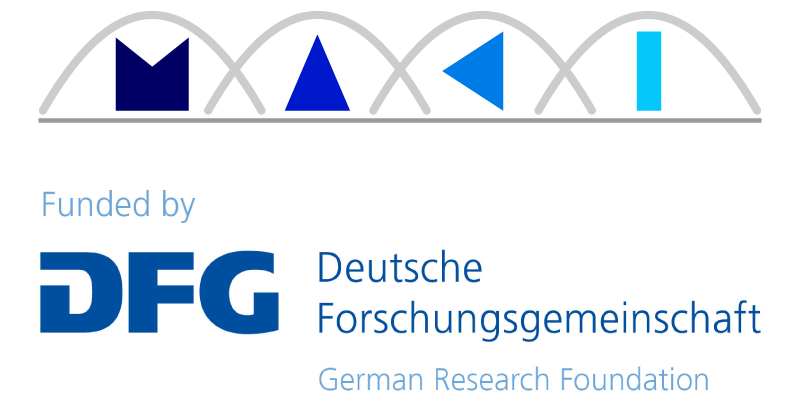Monitoring as a Service for Transitions-enabled Communication Systems
Subproject B1 investigates a flexible monitoring-service that is able to cope with the heterogeneity and complexity of transition-aware networks. In doing so, requirements of the applications and coexistent multi-mechanisms must be fulfilled. Using the capabilities of programmable networks, the monitoring-service gains flexibility. Resulting functional and performance hardware constraints are considered within the project. Furthermore, the viability of the monitoring service will be guaranteed for future services and applications.
The subproject B1 investigates Mechanisms and Algorithms to monitor coexisting, transition-capable multi-mechanisms in dynamic scenarios. The heterogeneity of the monitored mechanisms together with the resulting requirements for the monitoring approach demand for an extremely flexible solution. A key challenge for monitoring in transition-capable communication systems is to identify and collect relevant data in an efficient manner for the current mechanism configuration. In this context it is necessary to consider conflicts and dependencies between coexisting mechanisms and interference of the monitoring service itself. For efficient data collection and data analysis, monitoring-service functionalities which are custom-tailored to the requirements are deployed into the communication system by leveraging a programmable network infrastructure. By considering MAKI-specifics, the flexibility thus achieved goes far beyond monitoring functionality in current networks. Through the investigation of mechanisms and algorithms for monitoring purposes and the analysis of coexisting multi-mechanisms future programmable networks, B1 is able to develop the foundation for planning and coordination of transitions at the MAPE cycle.
In phase I a concept for a adaptive monitoring was conceived and investigated. This concept includes the fundamentally necessary components: i) data measurement/access, ii) data collection, iii) data analysis and iv). Solutions for these fundamental components have been developed in phase I. The solutions cover the properties of transition-capable communication systems which are investigated in MAKI.
The developed solutions enable s the local measurement of data independently from the current composition of the mechanisms as well as the robust collecting of data under strongly varying environmental conditions such as user density and mobility. Besides the system-technical view of the described solution, model-based adaptation approach was developed, which determines an adequate monitoring configuration by means of a feature model enriched by contextual information. For instance the context captures the varying requirements for the monitoring or the varying environment.
Based on the findings of the first phase, B1 investigates methods in phase II to realize a dynamic monitoring as a service concept for novel, programmable networks (i.e. based on SDN). The focus herein
lies in the monitoring of coexisting multi-mechanisms, which leads to largely unprecedented and unsolved requirements and dependencies to the monitoring. Transitions between the mechanisms can influence the necessary data, triggering a reconfiguration of data collection in the monitoring service. Due to the programmability of mobile multi-hop networks and SDN-based core networks new challenges for the placement and coordination of the monitoring components arise. These challenges have so far not been considered in dynamic environments with mechanisms that mutually influence each other. Because of the heterogeneity of the mechanisms the monitoring service needs to be programmable in order to adjust to the individual requirements, e.g. the collection of application-specific metrics. This all leads to new methodological challenges which are investigated in B1. An important challenge is the communication of monitoring information with a guaranteed latency to obtain an exact system state of the network. Only with such guarantees can the state of the network can be assessed reliably. In addition, the derivation of the quality perceived by users is crucial for capturing the quality of service in most user-centric applications. The novel placement strategies and programmability of monitoring components which are researched in B1 offer new possibilities for a flexible, network-wide monitoring of mechanisms. An open challenge is the flexibility of mechanisms which is not considered in current quality models.
The transitions between mechanisms, which are investigated in MAKI, pose special requirements to the monitoring. The delayed reactive adaptation as induced by transitions can lead to losses in the monitoring. Thus a proactive adaptation of the monitoring service to the transition-induced mechanism reconfiguration is essential for a continuous data collection. Therefore, there are two central aspects in B1 phase II for the investigation of a monitoring service. First, the programmability of the monitoring service will be researched to address heterogeneous requirements of coexisting multi mechanisms.
That includes also the usage of a programmable network infrastructure to place the monitoring components. Second, the monitoring service has to be realized as a multi mechanism which is capable of transitions, based on the results on phase I. So valid monitoring data can be gathered continuously throughout transitions and used in MAKI as foundation for planning and execution of transitions.
Subproject leader B1
- Prof. Dr.-Ing. Ralf Steinmetz
- Prof. Dr. rer. nat. Oliver Hohlfeld
- Prof. Dr. ès. sc. Patrick Eugster



